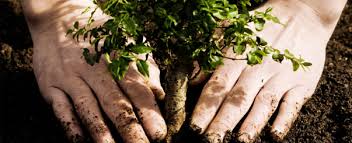Posts Tagged DK Landscaping
Front Yard Flower Bed Ideas – DK Landscaping
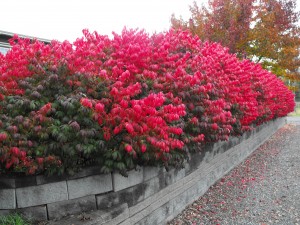 Want to make your home look calm, inviting, and happy? Add flower beds to your property for constant color. Use the beds to delineate property or break up bland expanses of lawn grass and dirt. Finding flower bed ideas is simple, but you should be sure of what you need and why. There are so many possible flower bed ideas that you can get easily bogged down in details if you start to look for designs without taking issues like drought and level of care into consideration. Pinpoint non-negotiable issues like those first to make designing your front yard a lot more efficient.
Want to make your home look calm, inviting, and happy? Add flower beds to your property for constant color. Use the beds to delineate property or break up bland expanses of lawn grass and dirt. Finding flower bed ideas is simple, but you should be sure of what you need and why. There are so many possible flower bed ideas that you can get easily bogged down in details if you start to look for designs without taking issues like drought and level of care into consideration. Pinpoint non-negotiable issues like those first to make designing your front yard a lot more efficient.
Drought-Proof Flower Bed Ideas
Drought is probably going to be one of your main considerations when looking at flower bed ideas. Many areas of the country are experiencing water shortages, and anything you plant has to be able to deal with a lack of abundant water. That doesn’t mean you have to plant cacti — just look for cultivars of flowers that have been bred to be less water-needy. Native flowers are always a wonderful choice in this case as they are already somewhat adapted to their region’s fluctuating water supplies. Plant breeders have been working on drought- and disease-resistant cultivars of all sorts of plants for years, and it’s become easier to find these in garden centers and from landscaping companies when looking at flower bed ideas.
Easy Care Flower Bed Ideas
Ease of care is another big consideration for flower bed ideas. Even if you have a landscaping company taking care of most of your garden, you’ll still have to do some minor care yourself. If you don’t feel up to that, you’ll want flower varieties that can handle benign neglect. Again, native flowers tend to be a little better for this, though there are easy-care species from all over the country if you’d like more variety for your flower bed ideas.
Location Ideas For Your Flower Bed
Now take a look at location to further refine your flower bed ideas. Flower beds that will be near the street need to be able to handle road salt spray, for example, if your area tends to have occasional snowfall in spring or fall. That’s not so much of a problem with annuals, as you’d be removing them anyway, but if can be for perennial or biennial flowers.
Flower bed ideas for spaces near fences can have species of varying heights, so those plants nearer the fence should be taller. The shorter flowers near the edge of the bed may need to be shade-tolerant if the bed is positioned where the fence or taller plants might block a lot of the sunlight.
Reduce Insects
Flowers planted next to the house need to be pest-resistant if possible. While it is impossible to guarantee that a flower will never attract a bug, if you have flowers that tend to attract pests, those pests could get into your house. Ask your garden center or landscaping company to show you flowers that have a reputation for repelling insects, too, such as marigolds, petunias, and nasturtiums. As you come up with ideas for other areas of your yard, you can work a few of these plants in so that you can reduce the number of pests you have to deal with overall. Start talking to landscape design companies about flower bed ideas and species that fit what you need for your yard’s environment, and you’ll have a beautiful yard in no time.
Xeriscape Landscaping in Sonoma County
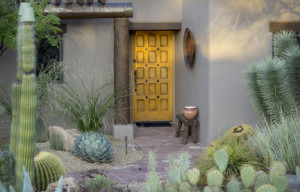 Xeriscape Why?
Xeriscape Why?
Xeriscape became a word invented by Denver Water Department when forbidding watering in summer. Sonoma residents must:
- select plants appropriate to your climate,
- mulch plants to help them retain moisture
- care for your plants properly
- keep plants healthy
- Plant shrubs, trees and other attractive plants where grass used to be.
The foregoing basics reduce water consumption 60 percent. Instead of a monotonous expanse of lawn in shades of green to brown, your yard can become rich with variety and interesting to observers. Filling your yard with a variety of hardy drought tolerant plants indigenous to your area is making a pact with Mother Nature that you are on her side. You are now going to help her with a bounty of beautiful plants she worked over 1,000 years to perfect for your exact piece of land.
Prepare the Yard Soil
- Pick up a fistful of thoroughly wet soil from your yard and squeeze it into a ball. The ball will stay formed or will crumble apart.
- Add organic material to your soil if the ball of dirt crumbled quickly. Compost or manure helps crumbly soil retain moisture.
- Add sand or ground bark to the soil if the ball of dirt formed a tight, hard ball. Hard, clay soil allows all water to run off quickly before it even has a chance to reach a plant’s roots.
Grow Plants Nature Designed for Sonoma
- Grow plants native to the Sonoma parched earth. They adapted mechanisms over hundreds of years to tolerate and cope with your weather and water gauge, so require little watering. Landscape companies can recommend plants for you so that your unique taste can still be displayed in your xeriscape garden.
- Plant trees suited to dry landscaping, such as California buckeye, which though their seeds are poisonous, make great shaped trees. The U.S. Department of Agriculture plant hardiness dictates zones 6a and higher for Sonoma.
- Plant drought-tolerant xeriscape shrubs like California wild lilac, best in USDA zones 5b or higher with lovely flowers. California wild lilac can grow in either full sun or partial shade.
- Choose drought-tolerant ornamental grass like blue lyme for full sun or light shade. This clumping grass is very hardy, with gray-blue foliage and grows up to 4 feet tall with very little water.
- Plant xeriscape succulents in your hard that will store water in fleshy leaves and need little water from you. The Century plant, or Agave Americana, grows well in USDA Zones 9a through 11 in full raging sun or a little shade. Reaching 8 feet in height and 12 feet wide. They provide a focal point if you just make sure you have a safe distance between its spiny leaves and foot traffic.
Follow Xeriscape Principles
- You must cover your entire garden with a layer of mulch or compost so that the need for moisture due to evaporation is nil. Compost has nitrogen, giving plants nutrition and improving texture of your xeriscape yard soil.
- Water in early morning or evening to minimize any evaporation. Drip irrigation systems are the most effective method for Sonoma.
List of Zero to Low Water Need Plants for Sonoma Area
There are many drought tolerant plants needing no supplemental summer water once established. While these are uber-drought tolerant xeriscape plants, some will do a bit better with some water. Some fine shrubs that meet these criteria are:
- Arbutus Onedo
- Acca Sellowiana
- Baccharis Pilularis
- Buxus
- Callistemon spp.
Contact your local landscape company to learn the multitude of xeriscape plants that can beautify your home without watering!
Winter’s For The Birds
While your garden is dormant, it can be just as entertaining and rewarding to feed our feathered friends in winter. Feeding the birds in winter is a kindness not only to them, but also to yourself. After all, there’s nothing quite like watching all of the birds happily feeding each morning while you’re sipping on a hot cup of coffee.
Winter is a particularly a difficult season for birds who stick around colder climates, and is at that time of year when their usual foods are in short supply. Birds use a lot of energy in the winter months to keep themselves warm, they need extra stamina. Winter birds are around, but in order to entice them into our yards, we must provide a little nosh – a little seed, perhaps some suet.
Enrich the Birds’ Diet
Birds need extra fat and protein in the wintertime. Fatty treats like oil sunflower seeds, peanuts, and suet are a tasty way to provide these nutrients. (Change the menu in favor of lighter fare when the spring thaw comes along.)
Hang a Covered Bird Feeder
Use a bird feeder equipped with a roof, to shelter your guests from all but the harshest weather that Mother Nature has in store. Fill it up regularly and remember to remove any seeds that get moldy from wintry damp.
Hang Feeders in Cat-Safe Locations
Place bird feeders in locations that do not also offer hiding places for sneak-attacks by cats and other predators. Think of placing the feeders ten to twelve feet from shrubs or brush piles. This gives the birds some time to react.
Offer Birds both Food and Drink
Birds can become dehydrated in winter even if surrounded by ice and snow. Putting out a pan of water near the feeder on warmer days is a terrific idea.
Save Money and Stock Up on Seed
Bird feeding veterans say it is best to stock up on birdseed in the Fall when many lawn and garden centers are discounting it to make way for winter merchandise. Stored properly, (in cool dry places) seed can easily last for months, particularly seed mixes and sunflower seeds.
Leaving berriesand other fruit on your native trees and bushes. Birds ranging from robins, cardinals, juncos, waxwings and mockingbirds to wild turkey and grouse will feast on these fruits throughout the cold months. And if you’ve been smart enough to leave your fallen leaves on the ground since autumn, the decaying leaf litter will provide a feast of insects, seeds, nuts and other treats for your backyard birds.
Firewood: Harwood vs. Softwoods?

Nothing sets the holiday mood than having a brightly burning fire complete with crackling sounds and fixating flames, to not only warm your home but your soul as well. But not all wood is created equal. Creating a great fire relies on great firewood, and it makes the choice more difficult with so many options available.
When trees are first cut down, they are full of moisture. It’s important to understand that all firewood needs to be properly seasoned, which is to say that it needs to have low moisture content. Well seasoned firewood is easier to start, produces more heat, and burns cleaner.
What’s Better: Hardwoods or Softwoods?
Hardwoods are dense and pack more heat per volume of firewood. This is why they tend to be the best options for burning. The only con to hardwoods is that they are difficult to light. That’s why many people will use softwoods to get the fire going.
Softwoods are less dense and ignite quickly, but they don’t provide long-lasting heat and warmth. They give off soot and creosote which line your chimney, which is a source of chimney fires. Whenever possible, avoid using softwoods in your fireplace. They may be great around a campfire, but they are the last thing you want in your home chimney.
Hardwoods
- Oak: Oak is abundant in the U.S. and considered one of the best picks for firewood. When it’s dried properly, it will burn for hours and produce warm heat. The key is that it needs to be seasoned properly. Oak firewood should be aged in a dry area for at least six months. Oak is difficult to light, but once started, it will offer a long-burning fire.
- Hickory: Hickory can be difficult to split, but once you have this part covered, it burns just as beautifully as oak.
- Ash: Some argue that ash is the best firewood to burn. Ash splits easily and has a low moisture content, which is why people love it.
- Maple: Hard maple produces a slow-burning fire because it’s very dense and heavy. Soft maple is also a suitable choice for firewood. It’s easy to burn with no heavy smoke.
- Birch: Birch is an attractive choice for firewood because it gives off a lot of heat, but the drawback is that it burns quickly. If you find bundles of birch, you’ll probably notice that it’s cheaper than other woods. Just remember that you will burn through more of it, so it’s best to mix in birch with slow-burning firewood like oak.
- Apple: Apple trees aren’t just valued for their apples. They also produce great wood for burning since it has a pleasant smoky aroma and generates little smoke.
Softwoods
- Pine: Pine is readily available, especially because it seasons faster than other wood varieties, and it’s easier to split and light. Pine is a great wood to start a fire with, but it’s not the best to continue with. Pine burns very quickly and has sap pockets that can explode, causing creosote buildup in the chimney.
- Fir: Fir produces sparking just as pine does, but the older trees are easy to split and start. Fir firewood also gives off an ample amount of heat, although not as much as the hardwoods.
Let’s hear from you. What’s your favorite wood to burn?
Raking Leaves – for Aesthetics or Maintenance?
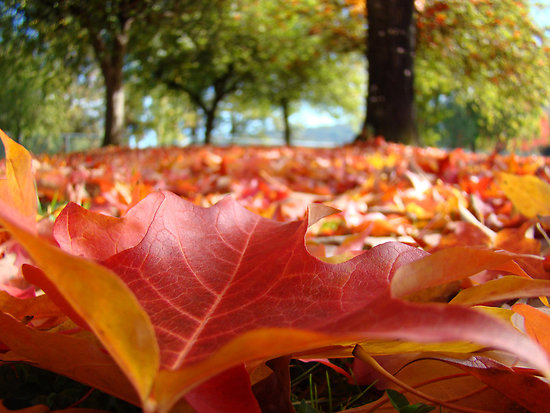 As wonderful as Autumn is, removing the fallen leaves from your lawn in the late fall is not generally regarded as a fun task. It’s time consuming and a bit tedious. You’ll be glad to know the payoff for all your labor goes beyond simply enhancing the curb appeal of your property. Removing fallen leaves is not only vital for the health of your lawn, but the beauty of it as well.
As wonderful as Autumn is, removing the fallen leaves from your lawn in the late fall is not generally regarded as a fun task. It’s time consuming and a bit tedious. You’ll be glad to know the payoff for all your labor goes beyond simply enhancing the curb appeal of your property. Removing fallen leaves is not only vital for the health of your lawn, but the beauty of it as well.
Excessive leaf matter on your lawn going into winter is bad for several reasons. Why you might ask? When your lawn becomes buried in layers of leaves, it becomes smothered and is deprived of water, air and nutrients it needs to survive. Without proper leaf removal your lawn will also become a breeding ground for fungi, disease and insects. Additionally, when leaves shade the grass they prevent it from receiving the sunlight it needs to thrive. While a few scattered leaves on the lawn won’t do much harm, a heavy thick layer will. Leaves left in place over the winter often become compacted and cause extensive damage to your lawn which can lead to increased costs and maintenance in the Spring.
Instead of raking the leaves, wait until they’re good and crunchy (ripe for jumping into), and then mow the leaves into little pieces. Then, you can just leave them! The leaves will serve as mulch and will protect the soil around your trees, shrubs, or garden.
Another option you have is to compost your leaves, but you simply can’t rake up all your leaves into a big pile and expect them to compost themselves. Composting requires regular turning of the leaves as well as the right amount of moisture.
Want to leave the fall clean-up work load for someone else? DK Landscaping Services offers both leaf removal and fall clean-up services. These services help ensure your landscape is clear of debris and fallen leaves are removed, preventing mold and fungus from growing. Give us a call (707) 280-3632.
Harvesting Your Vegetables

As the fall gardening season comes to an end, it’s definitely time to think about processing and storing the harvest. From roasted pumpkins/squash, steaming kale, to making delicious soups and stews, you’ll probably have plenty of delicious vegetables to keep you busy processing and freezing for weeks to come. Here are some tips from DK Landscaping on harvesting and storing those vegetables you grew this summer and fall:
Pumpkins and Squash – These vegetables are best harvested when the vine has dried up. If you’re threatened by frost, be sure to cover the vegetables with a blanket overnight. They’re delicious in soups, desserts and main entrees, and they can be processed immediately or stored in a cool, dry, dark environment for up to 8 months.
Leafy Vegetables – Kale, spinach, collard greens and cabbage are great growers during the fall months and often will survive a light frost. Pick the leaves when they’re young and tender, as they’ll taste better. Serve immediately or store in a cool setting for up to a week. Cabbage can be steamed and frozen or pickled for serving later in the year.
Root Vegetables – If you planted a second crop of radishes, carrots, beets or parsnips this fall, you can keep them in the ground until they reach the size you desire for eating. They’ll survive until the ground freezes hard, but typically are picked before then because they’re not as tasty when overgrown. These vegetables will keep in the refrigerator for a week, so be sure to plan them into your weekly menus shortly after picking them.
If you are already thinking ahead to your harvest for next summer, this is the perfect time to plant garlic. Wait until the first frost has passed, because you want the soil to be a bit cooler. The bulbs will thrive in the winter and produce beautiful large bulbs to be picked in the summer.
For more information about your harvest, contact DK Landscaping.
Backyard Beauty On A Budget
Want to build the garden of your dreams, but don’t want to shell out your hard-earned dough? Creating a low-maintenance yard on a budget has its challenges, but there are many ways to meet them. Good planning, a little gardening knowledge, creativity and a willingness to think outside the window-box are all you need to make your yard an enjoyable oasis for family and visitors alike without breaking the bank. DK Landscaping is here to you a less-expensive way to make your yard a better place!
DEFINE YOUR SPACES
Clearly defining the space you need whether it be, dining area, cooking area, shady lounging area, play area can make a great impact on your yard. Doing this can be as inexpensive as repositioning the furniture and accessories you already have. You may also want to build or buy a storage shed to keep kids’ toys out of sight when not in use.
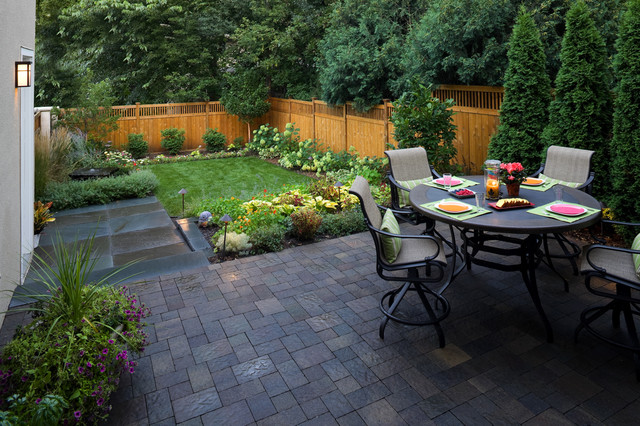
BUY TREES
If you have to spend money on the landscape spend it first on trees. you should always put trees in your landscape before anything else. It is worth a little extra money to get a good landscape tree. There are a lot of trash trees that will send up suckers, leave huge messes on your lawn, require hours of pruning, and die just as your landscape matures. For shade trees, named hybrid maples, oaks, and sycamores are almost always a safe bet. Avoid birches, most elms, poplars, and some ashes which grow fast, but are ultimately short-lived.
THINK VERTICALLY
If your backyard features a large, flat lawn, add some dimension by positioning boulders (available at landscaping supply stores) throughout the space. You might choose to arrange them individually or cluster a few together. Don’t be afraid to cut into the lawn to accommodate them and leave some space around for planting colorful perennials or small shrubs.
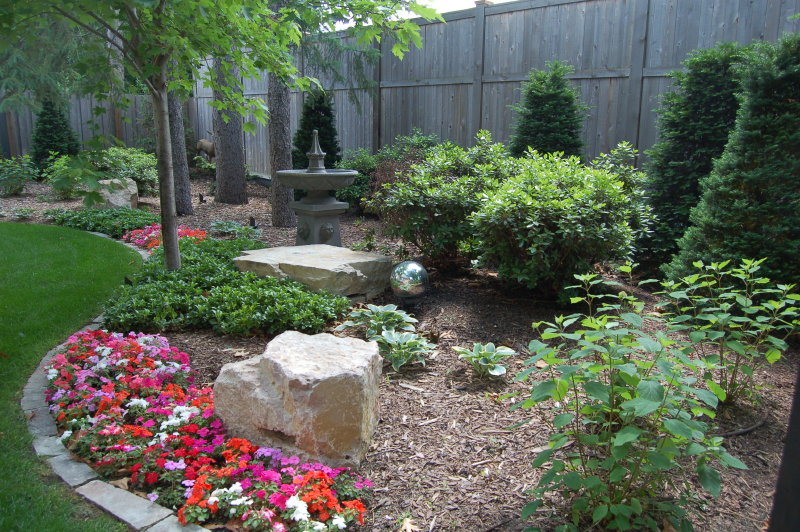
BUY PERENNIALS
As tempting as all those beautiful annuals are on the nursery shelves, think ahead. Every year you will need to replace them, as they die. This is one of the quickest ways to burn through a landscape budget. If you are willing to start annuals from seed (or any other plant for that matter) go for it! Just don’t buy them in a pot (or pony packs, or flats). Perennials on the other hand get bigger and more attractive year after year. A single $2, 4″ potted perennial can be a 8-foot mound of color within three years. The annual will be about the same size as the pot and will have cost three times as much.
TIP: Buy in the fall when perennials are on sale. Trees, shrubs and perennials are the bones of any garden. Unfortunately, they cost an arm and a leg at the beginning of spring and summer. Everyone thinks that you have to plant these at the beginning of the season. The reality is that they can also be planted in the fall when temperatures are cooler. The best part is that trees, shrubs and perennials go on sale at the end of the season, from anywhere between 5o to 75 percent off their regular price.
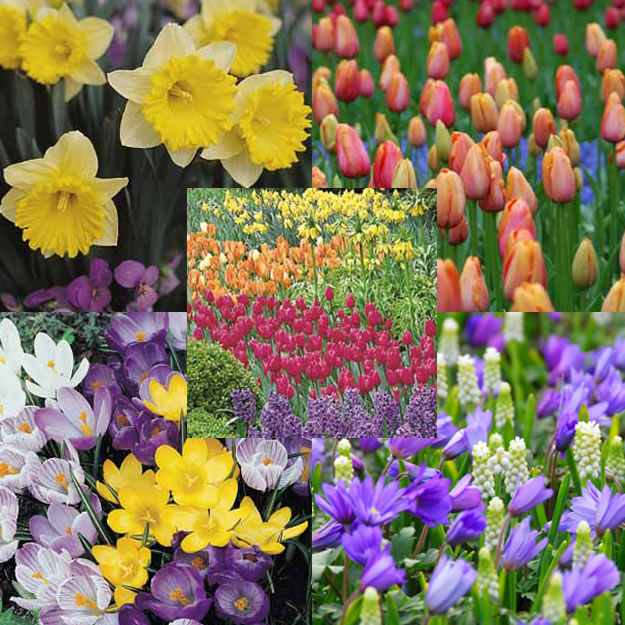
Freecycle and Craigslist
Check out Freecycle and Craigslist to find all manner of garden goodies. Everything from plant divisions to garden tools, pots, containers and even garden furniture often for deals during spring and summer.
You can easily start many plants from seed, get free divisions and cuttings from generous neighbors to help you save cash when planting your own garden. Hardscape goods are really expensive, but you can easily source them from other gardeners who are undergoing remodeling projects. Buying trees, shrubs and perennials at the right time of the year will earn you the biggest savings when landscaping your yard. Use these frugal gardening tips to help you easily landscape your yard into the verdant paradise of your dreams. If you’re interested in learning more about landscaping, consider contacting DK Landscaping for a free consultation (707) 280-3632. Serving the greater Sonoma County areas.
Stop and Smell The Flowers!!
Flowers! From incredible wedding bouquets and beautiful Mother’s Day arrangements to blooms we offer in the hope of soothing hurt feelings, there are many occasions and reasons for why we plant them and offer them as gifts. So As you begin to paint the picture of your landscape plan, take a moment to consider their meaning before you begin to plant. Here are a few of the most popular floral choices and the meaning that they convey:
Roses 
There is no flower that has been revered and celebrated as much as the rose. As a source of inspiration to people throughout history, roses are the definitive symbol for love and appreciation, but the different colors also have a meaning all of their own:
Yellow roses mean joy ~ Red roses mean passion ~ Burgundy roses mean unconscious beauty ~ Orange/coral roses mean desire ~ Red and white roses together mean unity ~ Pink roses mean grace and gentility ~ White roses mean worthiness
Orchids
With an exotic appearance, orchids have come to represent rare and delicate beauty. Those seeking to make a lasting impression with a unique flower have found the orchid to be a perfect choice. As both potted plants and cut flower arrangements, these tropical flowers have an undeniable appeal. Different cultures throughout history have believed in the healing, disease-fighting and protective properties of the orchid. In traditional Chinese medicine the orchid is used to help cure coughs and lung illnesses. The ancient Greeks associated it with virility, and the Aztecs were said to drink a mixture of the vanilla orchid and chocolate to give them power and strength.
Lily 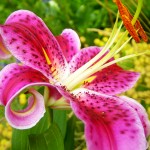
A very common flower at funerals, lilies also symbolize virtues such as purity, sweetness and friendship. The Greeks believed the lily sprouted from the milk of Hera, the wife of Zeus. White lilies signify purity and sweetness, day lilies symbolize coquetry and yellow lilies can mean falsehood or gaiety. Lilies of the Valley mean a return of happiness.
Iris Flowers
Few other flowers can match the elegant beauty of the iris. Representing faith, hope, and wisdom, the iris is a flower that can be used for many different occasions. While it is most known for its distinctive blue varieties, the iris can also be found in other colors such as yellow and white.
Tulips
With their flower meaning being perfect love, tulips can impart a sense of grace and elegance wherever they are displayed. The tulip is recognized throughout the world as one of the most popular cultivated flowers, but they are particularly associated with the Netherlands. Dutch tulips are among the leading tulip varieties within the floral community.
Carnation
As one of the most popular flowers in the world, the carnation is widely appreciated and enjoyed. Carnations are available in a variety of colors and are generally symbolic of love and fascination.
- Red carnation symbolizes love, pride and admiration
- Pink carnation symbolizes the love of a woman or a mother
- Purple carnation symbolizes capriciousness;
- Yellow carnation symbolizes disdain, rejection or disappointment
- White carnation symbolizes innocence and pure love
- Striped carnation conveys refusal
DK Landscaping are your landscaping and gardening experts. If you need a company to spruce up your existing landscape or custom design one, call us.. DK Landscaping serves Petaluma, Cotati, Rohnert Park, West County, Santa Rosa and Windsor areas. Call us today ![]() 707.280.3632.
707.280.3632.
Surviving Winter Drought
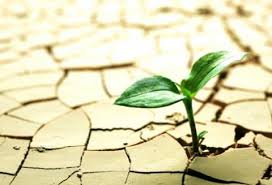
Since our “official” rainy season began October 2013, Sonoma County county has seen only two inches of rain bringing us the driest season that anyone can remember in the North Bay. This has resulted in another difficult growing season for farmers and gardeners. Many cities are already implementing water restrictions and encouraging citizens to voluntarily engage in water conservation.
So what can the home gardener do to use less water, enjoy the garden more, and help the environment? Here are DK Landscapings 10 easy tips:
1) Check for Leaks and Repair– Leaks can occur for many reasons and in many parts of watering systems. Review sites weekly for “weeping” valves, sprinklers, hose bibs, etc.
2) Choose Hand Watering – over automatic irrigation when possible. The more time you spend with the plants, the more they benefit from the attention, the sooner they establish, and the less water they need.
3) Avoid Runoff – To gauge the time to run off, turn on a sprinkler zone and track the time until water runoff begins. That is the amount of run time that should be entered into the controller followed by at least 30 minutes before the next cycle.
4) Inspect and Tune-Up your Sprinkler System Monthly – Adjust your sprinkler heads to prevent water draining off your lawn and down the gutter. Reduce sprinkler run-time, and don’t be a gutter flooder.
5) Get to Know Your Meter – Your water meter is an important conservation tool. It not only measures the amount of water you use, but can also tell you if there is a leak in your plumbing.
6) Incorporate Shrubs and Trees into the garden. Once established, these deep-rooted plants require far less water than shallow-rooted perennials and annuals.
7) Learn Soil/Plant Relationships – Landscape plantings need healthy soil to grow and thrive. The more healthy a plant is, the more stress it can tolerate. Knowing soil type will help with irrigation scheduling. Being able to identify plants will indicate how to best care for the landscape as a whole. In times of drought, reducing fertilizing and pruning can help plants survive with a reduced amount of water.
8) Water – between midnight and 6:00 a.m. to reduce water loss from evaporation and wind. Water your lawn and garden in 2 or 3 short cycles rather than one long one. Watering to a depth of 4″ to 6” will encourage deeper healthier roots and allow the plants to go without water for longer periods of time.
9) Reduce the size of water features (like a pond, stream, or water fountain) to conserve water while still attracting birds and wildlife.
10) Use a Broom, not a hose, to clean your driveway, deck, or patio. Washing a sidewalk or driveway with a hose uses about 50 gallons of water every 5 minutes.
DK Landscaping specializes in water conversation, water efficiency and water management and makes it a priority when serving our clients and our community every season of the year. It is a primary consideration in everything we do, from the selection of plants to the design of irrigation systems and the equipment choices we make.
Every drop matters, and each one of us counts.
Winter Trees
When comparing winter to the lush of spring, summer and fall colors, landscape in the winter can seem subdued. But don’t be too quick to dismiss the garden in the off season. Evergreens are a great and obvious choice to add to your landscape, but what about winter trees? Winter trees offer interesting bark, brightly colored berries, and interesting form and are filled with beautiful secrets of seasons past, as well as seasons to come.
Winter trees can add structure to the landscape and garden and some make excellent hedges and screens whilst others are ideal as statement specimens. From flowering cherries and crab apples to evergreen yews and weeping willows trees offer different leaf size, shape and color. Many have attractive flowers, fruits and seeds and there are those that flower magnificently in spring and those whose leaves offer brilliant autumn color just before leaf fall.
Here are DK Landscaping’s top ten list of trees we recommend planting in the winter.
1. Himalyan Birch (Betula utilis var. jacquemontii)
2. Silver Birch (Betula pendula)
3. Snowy Mespilus (Amerlanchier lamarckii)
4. Christmas berry ‘Red Robin’ (Photinia fraserii ‘Red Robin’)
5. Freeman’s Maple (Acer freemanii ‘Autumn Blaze’)
6. English oak (Quercus robur)
7. Pin oak (Quercus palustris)
8. Crab apple (Malus ‘Evereste’)
9. Crab apple (Malus ‘Rudolph’)
10. Vilmorin’s mountain ash (Sorbus vilmorinii)
By planting trees you can reduce or improve your carbon footprint and generally enhance the environment. Trees can transform an area by introducing welcome shade, protective shelter and wildlife and are an investment for future generations.
All trees require some support and protection such as stakes, tree ties and tree guards. Fertilizer can be added to the planting hole and mulch can be added after planting to preserve moisture and keep down weeds.
Newly planted trees do best when exposed to moderate temperatures and rainfall and they need time to root and acclimatize before the onset of summer heat or the harsher temperatures of winter. Container grown trees can be planted at any time of the year providing the soil / ground is not frozen or water logged.




